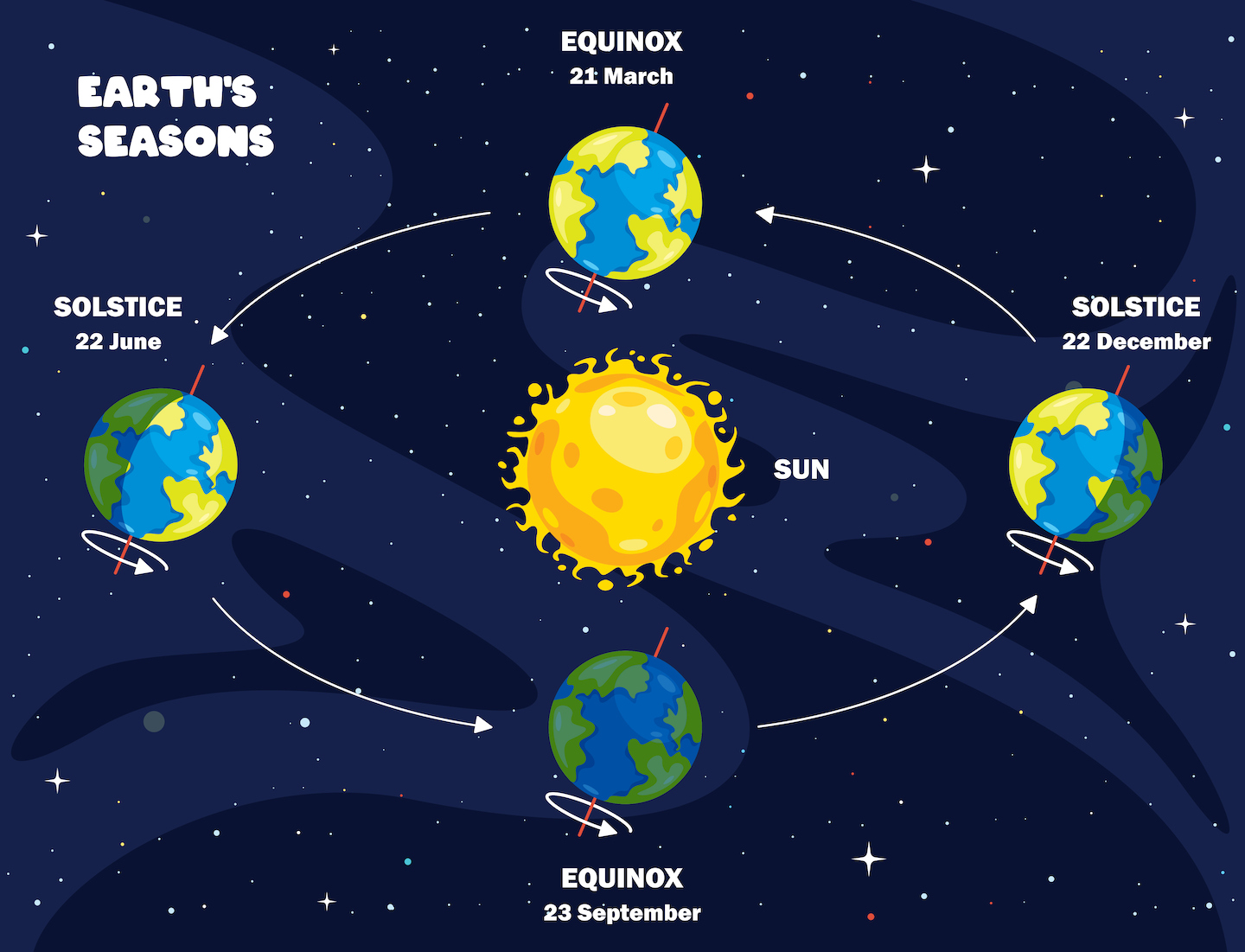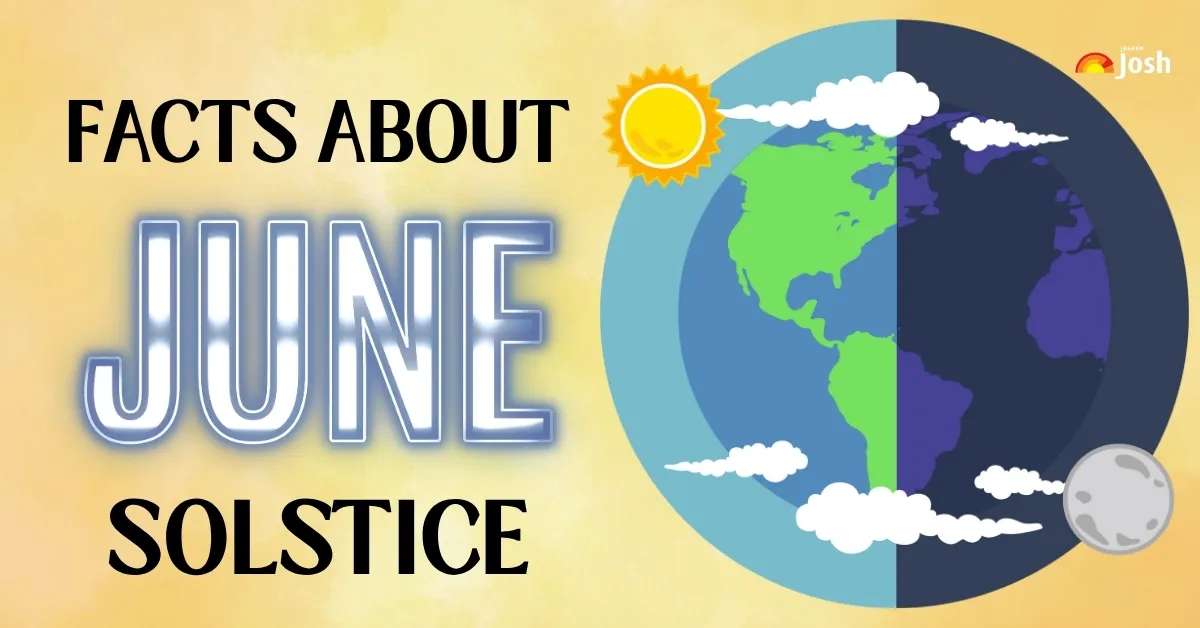The June Solstice, a noteworthy astronomical event, marks the moment when one of Earth's poles reaches its maximum tilt towards the Sun. In 2025, this occurs on June 21st.
For the Northern Hemisphere, this signifies the Summer Solstice, bringing the longest day and shortest night of the year as the Sun reaches its highest point in the sky over the Tropic of Cancer.
Conversely, the Southern Hemisphere experiences its Winter Solstice, marking its shortest day and longest night.
One fascinating fact is that the word "solstice" comes from the Latin "solstitium", meaning "sun-stopping", as the Sun's apparent movement across the sky appears to pause before reversing direction.
In this article, we'll take a look at the science behind the June Solstice and explore how the lengths of days and nights vary across different parts of the globe.
What is Solstice?

Source: Science News Explores
A solstice is an astronomical event that occurs twice a year, around June 20-22 and December 20-22. It marks the moment when the Sun reaches its most northerly or southerly point relative to the celestial equator (the projection of Earth's equator onto the celestial sphere).
-
Earth's Tilt: The Earth's axis is tilted at approximately 23.5 degrees relative to its orbit around the Sun. This tilt is the primary reason we experience seasons.
-
Sun's Apparent Path: As Earth orbits the Sun, this tilt causes the Sun's apparent position in our sky to shift throughout the year.
-
Maximum Tilt: A solstice occurs when one of Earth's poles is at its maximum tilt directly toward or away from the Sun.
-
Summer Solstice: For a given hemisphere, the summer solstice is when that hemisphere is tilted most directly towards the Sun. This results in the longest day and shortest night of the year for that hemisphere. The Sun appears highest in the sky at noon.
-
Winter Solstice: Conversely, the winter solstice occurs when that hemisphere is tilted most directly away from the Sun. This leads to the shortest day and longest night of the year, and the Sun appears lowest in the sky at noon.
The word "solstice" comes from the Latin words "sol" (sun) and "sistere" (to stand still) because around the time of the solstice, the Sun's apparent movement north or south in the sky seems to pause before reversing direction.
What is Summer and Winter Solstice?
Summer and Winter Solstices are the two specific points in Earth's orbit where one of its poles is most tilted towards or away from the Sun, respectively. This tilt, approximately 23.5 degrees, is the fundamental reason we experience seasons.
1. Summer Solstice:
-
What it is: For a given hemisphere, the summer solstice occurs when that hemisphere is tilted most directly towards the Sun.
-
Effect: This results in the longest day and shortest night of the year for that hemisphere. The Sun appears highest in the sky at local noon.
-
Timing:
-
-
Northern Hemisphere: Around June 20th or 21st. The Sun is directly overhead the Tropic of Cancer (23.5° North latitude).
-
Southern Hemisphere: Around December 21st or 22nd. The Sun is directly overhead at the Tropic of Capricorn (23.5° South latitude).
-
2. Winter Solstice:
-
What it is: For a given hemisphere, the winter solstice occurs when that hemisphere is tilted most directly away from the Sun.
-
Effect: This results in the shortest day and longest night of the year for that hemisphere. The Sun appears lowest in the sky at local noon.
-
Timing:
-
-
Northern Hemisphere: Around December 21st or 22nd. The Sun is directly overhead at the Tropic of Capricorn (23.5° South latitude).
-
Southern Hemisphere: Around June 20th or 21st. The Sun is directly overhead the Tropic of Cancer (23.5° North latitude).
-
When is Summer Solstice 2025?
The Summer Solstice in the Northern Hemisphere is on June 20, 2025 i.e., Friday. This is the longest period of daylight in the Northern Hemisphere and the shortest night of the year in the Southern hemisphere, when the sun is at its highest position in the sky.
10 Amazing Facts About Summer & Winter Solstice
Here are 10 amazing facts about the Summer and Winter Solstice:
-
Dates Vary: Solstices don't always fall on the same day; they can be June 20th-22nd for summer and December 20th-22nd for winter in the Northern Hemisphere.
-
Longest/Shortest Day, Not Hottest/Coldest: The longest day (summer solstice) isn't the hottest, and the shortest day (winter solstice) isn't the coldest. There's a "seasonal lag" as Earth heats or cools.
-
"Sun Stands Still": The word "solstice" means "sun stands still" because the Sun's apparent movement north or south pauses before reversing.
-
Sun Directly Overhead:
-
Summer Solstice (Northern Hemi): The Sun is directly over the Tropic of Cancer (23.5° North).
-
Winter Solstice (Northern Hemi): The Sun is directly over the Tropic of Capricorn (23.5° South).
-
Midnight Sun & Polar Night:
-
Arctic Summer Solstice: 24 hours of daylight ("Midnight Sun").
-
Arctic Winter Solstice: 24 hours of darkness ("Polar Night").
-
Shadow Lengths:
-
Summer Solstice (Northern Hemi): Shortest shadows at noon.
-
Winter Solstice (Northern Hemi): Longest shadows at noon.
-
Opposite Hemispheres: When one hemisphere has its summer solstice, the other has its winter solstice – they're always opposite.
- Astronomical Season Start: Solstices mark the astronomical start of summer and winter, not the meteorological (calendar) start.
